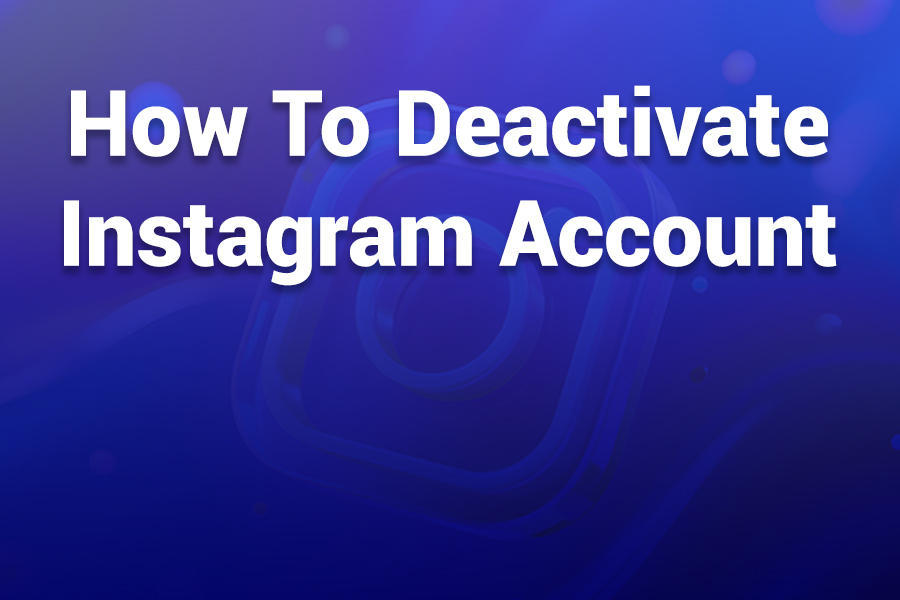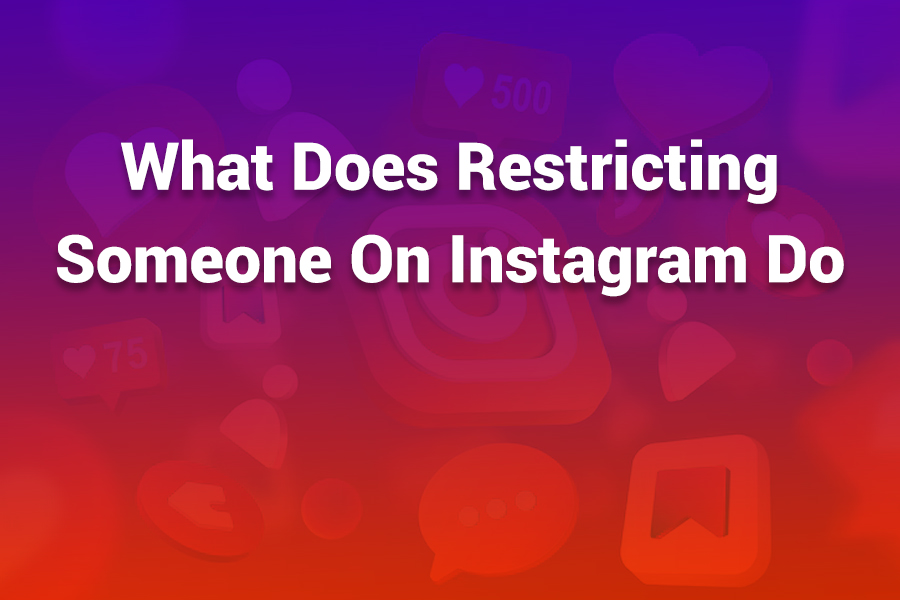
Social media has become an inseparable part of daily life, but sometimes, a break is necessary for your mental clarity, productivity, or personal privacy. Instagram, one of the most popular social platforms in the U.S., can easily consume hours of your day with its endless content.
Whether you’re stepping away for a digital detox, protecting personal information, or simply managing your time better, knowing how to deactivate your Instagram account properly is essential. In this article, you will learn step-by-step how to deactivate your Instagram account, the difference between temporary deactivation and permanent deletion, what happens to your data, and tips to manage your account safely before taking that step.
Understanding the Difference Between Deactivating and Deleting an Instagram Account
Before you make any decision, it’s important to understand that deactivating your Instagram account is not the same as deleting it. Deactivation is temporary, while deletion is permanent. When you deactivate, your profile, photos, comments, and likes become hidden from other users, but they are stored securely by Instagram. You can reactivate the account anytime by logging back in. On the other hand, deleting an account permanently removes all data—posts, followers, messages, and settings—without the option to recover them later.
Deactivation gives you flexibility. It’s the ideal choice if you want to take a break from social media without losing your memories, connections, or data. Deletion, however, is a drastic step often taken when someone wants to permanently leave the platform. According to a 2025 report by Statista, over 35% of U.S. users have considered temporarily deactivating their social accounts to improve focus or well-being, proving that temporary breaks are increasingly popular.
Why People Choose to Deactivate Their Instagram Accounts
There are several reasons why people decide to step away from Instagram, and understanding these can help you decide what’s best for you.
- Digital Detox: Many users experience burnout from endless scrolling, likes, and comparisons. Deactivating your account allows you to reset and regain control of your time.
- Privacy Concerns: With rising data breaches and privacy issues, some users temporarily deactivate accounts to limit their digital footprint.
- Mental Health Reasons: Studies from the American Psychological Association have linked heavy social media usage to increased anxiety and decreased self-esteem. A temporary break can help restore mental balance.
- Productivity and Focus: Deactivation helps you focus on work, studies, or personal goals without constant notifications.
- Life Transitions: Some people pause their accounts during big life changes such as exams, job searches, or moving to a new city.
Whatever your reason, Instagram’s temporary deactivation option offers an easy way to pause your account without deleting your digital presence.
Step-by-Step Guide to Deactivate Your Instagram Account
Deactivating your account takes only a few minutes if you follow these steps carefully. It cannot be done directly through the Instagram mobile app, so you will need to use a web browser—either on your computer or mobile device.
Step 1: Log in to Instagram on a Web Browser
Open Instagram’s official website and log in using your username and password. You can use any browser—Chrome, Safari, or Firefox—on your desktop or phone.
Step 2: Access Profile Settings
Click your profile picture in the top-right corner of the page. From the drop-down menu, select “Profile,” then click on “Edit Profile.” This section contains all your account information.
Step 3: Choose ‘Temporarily Disable My Account’
Scroll down to the bottom of the page. You’ll see an option that says “Temporarily disable my account.” Click on it.
Step 4: Select a Reason for Deactivation
Instagram will ask you to choose a reason from a list such as “Need a break,” “Privacy concerns,” or “Too busy.” Select the one that fits your situation best.
Step 5: Re-enter Your Password
For security purposes, Instagram will require you to enter your password again before proceeding.
Step 6: Confirm the Deactivation
After confirming your reason and password, click the “Temporarily Disable Account” button. Once done, your account will be deactivated, and your profile will be hidden from other users until you decide to log back in.
How to Reactivate Your Instagram Account
Reactivation is even easier than deactivation. All you need to do is open Instagram on the app or web browser and log in with your username and password. Instagram automatically restores your profile, photos, and messages exactly as they were before deactivation.
Keep in mind that Instagram limits how often you can deactivate an account. Currently, you can only deactivate once per week. If you try to deactivate again before seven days, you’ll need to wait.
What Happens to Your Data When You Deactivate
When you deactivate your Instagram account, nothing gets deleted. Your photos, videos, stories, messages, and followers remain stored safely on Instagram’s servers. Other users won’t be able to see your profile, tag you, or send you direct messages while your account is deactivated.
This temporary hiding feature allows you to take a mental break without worrying about losing data. Once you reactivate your account, everything returns instantly—your posts, interactions, and even saved drafts.
Precautions Before Deactivating Your Account
Before you deactivate your Instagram account, it’s wise to prepare your profile properly. Here are some quick precautions:
- Download Your Data: Instagram offers a “Download Your Information” feature under Privacy settings. Use this to save all your photos, messages, and posts offline.
- Inform Close Contacts: If you use Instagram to communicate with friends or clients, let them know you’ll be unavailable for a while.
- Check Linked Apps: Some websites or services may use your Instagram login for access. Deactivating might disrupt their functionality, so disconnect them first.
- Disable Two-Factor Authentication (Optional): This step can simplify reactivation later, though it’s not required.
Deactivating vs. Logging Out: What’s the Difference?
Many people confuse deactivation with simply logging out. Logging out only ends your current session—you can still receive notifications, and your profile remains visible to everyone. Deactivation, however, hides your profile completely from others. It’s the more effective choice if you truly want to disappear from the platform temporarily.
Deactivation on Desktop vs. Mobile
You can deactivate your Instagram account from any web browser, including mobile browsers. The process is nearly identical on both desktop and mobile. The only difference is screen layout. Instagram’s app does not currently allow full account deactivation, only deletion requests.
On mobile browsers, you may need to tap the menu (three horizontal lines) before accessing your profile settings. Otherwise, the process mirrors the desktop version.
How Long You Can Keep an Account Deactivated
There’s no strict time limit for how long your Instagram account can stay deactivated. Many users leave their accounts disabled for months or even years without issues. However, inactivity for extended periods might result in username availability changes, so if you plan to stay offline for long, consider logging in occasionally to keep the account active internally.
Can You Deactivate Instagram Without Losing Followers?
Yes. One of the main advantages of temporary deactivation is that you don’t lose followers. When you reactivate your account, your follower list remains exactly as before. None of your followers or following count changes.
However, if your friends try to visit your profile while it’s deactivated, they will see a “User not found” message. Once you log back in, your profile becomes visible again.
How Deactivation Affects Messages and Tags
While your account is deactivated, your messages remain hidden. People who previously chatted with you will no longer see your profile picture, and they won’t be able to send new messages. Likewise, if someone tries to tag you in a photo or comment, your username won’t appear in the suggestion list.
After reactivation, all messages and previous tags are restored. Instagram maintains the data internally but hides it during the inactive period.
Common Issues During Deactivation
Some users report problems during the deactivation process. The most common issues include:
- Password Errors: Double-check your credentials before confirming. Reset your password if needed.
- Too Frequent Deactivation: Instagram allows temporary deactivation only once per week.
- Browser Cache Problems: If the button doesn’t appear, clear your browser cache and cookies or switch to incognito mode.
Tips to Make the Most of Your Break from Instagram
A digital break can be refreshing if used wisely. Here’s how you can benefit from your Instagram hiatus:
- Focus on Offline Activities: Use the time to read, exercise, or spend quality time with loved ones.
- Set Clear Goals: Define why you’re taking a break—whether to focus on work or reduce anxiety.
- Evaluate Your Online Habits: Reflect on how you use social media and what value it adds to your life.
- Plan a Healthier Return: When you reactivate, follow accounts that inspire positivity instead of comparison.
Recent Trends in Social Media Deactivation
In recent years, more Americans have chosen to take temporary breaks from social platforms. A 2024 Pew Research Center survey found that nearly 40% of adults in the U.S. had either deactivated or deleted at least one social media account in the previous 12 months. The top reasons were privacy, time management, and mental health improvement.
Gen Z users, in particular, are driving this trend. Nearly half of U.S. users aged 18–25 report taking periodic social media breaks every few months to maintain emotional balance. This cultural shift shows that digital well-being is now as important as digital connection.
When to Consider Permanent Deletion Instead of Deactivation
While deactivation works for temporary breaks, deletion might be the right choice if you no longer want to use Instagram at all. You might choose this if you’re switching platforms, want to erase personal data permanently, or have privacy concerns.
Before deleting, it’s critical to download all your data. Deletion removes everything—posts, followers, messages, and archives—and cannot be reversed. Once deleted, you’ll need to create a new account from scratch.
Final Thoughts on Deactivating Your Instagram Account
Deactivating your Instagram account is a smart, flexible way to regain control of your digital life without losing your content. It’s quick, reversible, and effective for users who need a break. Whether your reason is privacy, focus, or mental clarity, this temporary step can make a noticeable difference in your daily routine.
Social media should serve your well-being, not drain it. By learning how to deactivate Instagram safely and understanding the benefits of a break, you empower yourself to use technology mindfully. When you return, you’ll likely have a fresher perspective and a healthier relationship with the platform.





